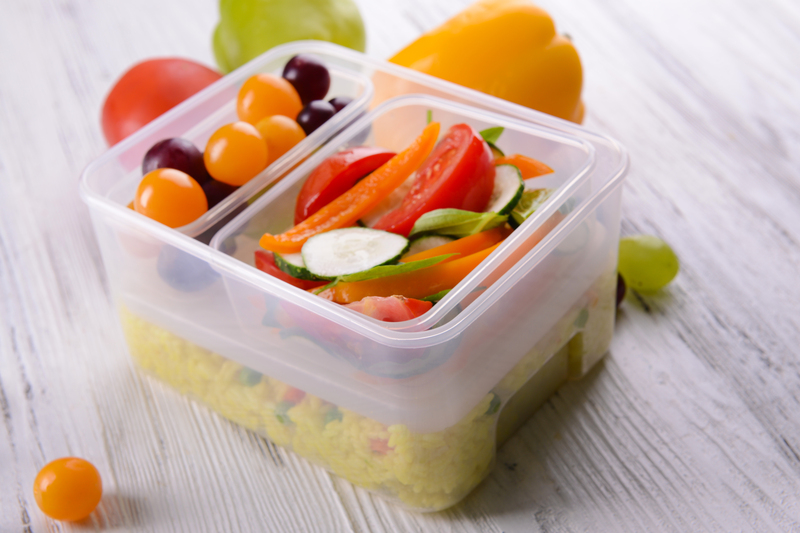Stretch Your Budget During Bulky Waste Item Removal
Bulky waste item removal can quickly drain your wallet--especially when facing home renovations, moving, or decluttering projects. The disposal of large, awkward, or heavy items--from worn-out furniture to broken appliances--presents a unique challenge if you want to keep costs low and maintain eco-friendly practices. If you're looking to stretch your budget during bulky waste item removal, you're certainly not alone. In this comprehensive guide, we'll explore creative strategies, cost-saving tips, and essential insights that can help you get rid of your bulky junk without breaking the bank.
Understanding Bulky Waste Items
Bulky waste refers to large items that cannot fit in standard garbage bins or bags. Common examples include:
- Furniture (sofas, mattresses, wardrobes)
- Appliances (fridges, washing machines, stoves)
- Outdoor equipment (grills, broken bicycles, swing sets)
- Construction debris (old doors, bathtubs, sinks)
These items usually require special handling and often incur extra fees from local waste management services. Understanding what constitutes a bulky waste item helps you plan ahead and seek the most effective and affordable disposal solution.
Why Bulky Waste Removal Can Be Expensive
Bulky waste disposal costs can quickly add up due to factors such as:
- Size and Weight: Larger and heavier items cost more to transport and dispose of.
- Environmental Regulations: Certain items must meet legal or recycling requirements, often translating into additional service or disposal fees.
- Labour Charges: Handling and carrying large waste objects might require extra manpower.
- Limited Collection Schedules: Municipalities often restrict bulky item pickups to a few times per year or charge for each collection.
- Special Equipment: Dumpsters, trucks, and lifting equipment may be essential, especially for larger projects.
Knowing these factors can help you find ways to save money while still ensuring responsible and efficient disposal.
Strategies for Stretching Your Budget During Bulky Waste Item Removal
1. Plan Ahead--Don't Wait Until the Last Minute
One of the smartest ways to cut the cost of bulky waste item removal is to plan ahead. Many municipalities require scheduling weeks in advance for large pickups. Waiting until the last moment could force you to pay for premium or emergency services.
- Tip: Check your local council's website for free or discounted bulky item collection dates. Some cities offer annual or biannual pickup services at no charge for residents.
- Set a reminder to coordinate your bulky waste removal with these events to maximize your savings!
2. Sort and Consolidate Your Bulky Items
Sorting your waste ahead of time can reduce costs and make disposal more efficient. Separate recyclable, donatable, and true landfill items.
- Donate: Usable furniture and appliances can often be given to charities, shelters, or community organizations. Some may even offer free pickup.
- Recycle: Metal, electronics, and some plastics may be recycled at lower cost or for free at certain facilities.
- Dispose Responsibly: Only send items that truly cannot be reused or recycled to the landfill to avoid unnecessary dumping fees.
3. Utilize Free or Low-Cost Community Resources
Your city may provide periodic opportunities for low-cost bulky item disposal.
- Neighborhood Cleanup Events: Many communities host "clean sweep" days where you can drop off items for free or at a reduced price.
- Bulk Waste Drop-Off Sites: City-operated transfer stations or landfills often have discounted rates for residents.
- Bulk Item Vouchers: Occasionally, cities issue vouchers for free bulky item disposal--make sure to claim yours if eligible.
Always check local ordinances--some items (like mattresses or white goods) require special tags or additional fees.
4. Consider DIY Disposal Solutions
If you have access to a vehicle (like a pickup or trailer), conducting a DIY dump run is usually less expensive than hiring a junk removal service.
- Team Up with Neighbors: Share transport and landfill fees by combining loads--this can lead to substantial savings per household.
- Dismantle Large Items: Break down furniture or appliances into smaller pieces to maximize your load and potentially save on drop-off fees (which are often based on volume or number of items).
- Safety Tip: Always check your landfill's acceptance policies before loading your vehicle.
5. Explore Junk Removal Alternatives
While full-service junk removal companies offer convenience, their prices can be steep. Consider alternatives such as:
- Single-Item Pickups: Some haulers charge less for single bulky items rather than full truckloads.
- Online Marketplaces: Websites like Craigslist, Freecycle, or Facebook Marketplace can help you sell or give away large items--and buyers often handle their own pickup.
- Nonprofit Collection Programs: Charities, shelters, and churches sometimes accept gently used large items and handle the removal as part of their donation process.
6. Rent a Skip or Dumpster (If It Makes Sense)
For larger projects--such as estate cleanouts or remodels--renting a mini skip or dumpster might be economical. Compare prices from several providers, and be sure to:
- Split the rental with a neighbor or friend to lower your share of the cost.
- Understand what is and isn't allowed--hazardous materials, tires, and certain appliances may incur surcharges.
- Fill the bin strategically to maximize its capacity and minimize space wasted on air or oddly-shaped items.

How to Avoid Common Bulky Waste Removal Mistakes
- Not researching local rules: Every city or county has specific guidelines on what can be collected curbside or dropped-off, and missing these can result in extra fees.
- Poor scheduling: Last-minute arrangements often force you into more expensive options.
- Mixing materials: Combining hazardous, recyclable, or e-waste with general rubbish often leads to rejected loads and higher costs.
- Overlooking donation or resale opportunities: Many items, even if gently worn, may have value to Somebody else.
Green Solutions: Recycle, Repurpose, and Donate
Stretching your budget during the removal of bulky waste items often goes hand-in-hand with sustainability. Here's how to make your cleanout both affordable and environmentally friendly:
- Mattress and Furniture Recycling: Many local recyclers accept beds, couches, and similar items for processing at a reduced fee.
- E-waste Programs: Old refrigerators, TVs, and computers should be dropped at authorized e-waste centers which often handle safe disposal for free or minimal cost.
- Upcycling: Repurpose furniture or appliance components into DIY projects--turn an old dresser into a garden bed or shelves, for example.
- Donation Drives: Collaborate with neighbors for a community donation day; many charities will pick up at no cost if several households participate.
Comparing Costs: Professional Bulky Waste Removal vs. DIY Disposal
Hiring a professional bulky waste removal service is the right option for many, particularly when:
- The items are too large or hazardous to handle yourself
- Access to a vehicle or manpower is unavailable
- Disposal deadlines are tight and you require quick service
Nevertheless, DIY disposal can be a fraction of the price--especially for those willing to put in a little extra effort. Below is a quick comparison table:
| Option | Average Cost | Pros | Cons |
|---|---|---|---|
| Professional junk removal | $75 - $600 per load | Convenient, no labor required, fast | Expensive, limited control over sorting |
| DIY dump run | $20 - $80 per car/truckload (plus fuel) | Low cost, flexible, ability to sort items | Labor intensive, vehicle needed |
| Skip/dumpster rental | $100 - $400 per week | Handles large volumes, can share cost | Requires space, permits may be needed |
| Curbside pickup (city service) | Often free, or $20 - $60 | Low cost, convenient | Limited dates, restrictions on items |

Frequently Asked Questions on Stretching Your Bulky Waste Budget
Q: Can I recycle all my bulky waste items?
Not all items are eligible for curbside recycling, but many municipal and private recycling centers accept large furniture, mattresses, and appliances with advance notice or at designated drop-off points. Always check first to avoid unnecessary trips.
Q: How can I dispose of a bulky item for free?
List usable items on local online classifieds or contact charities that offer free pickup. Monitor community event calendars for "clean sweep" days. Otherwise, some cities include an annual free bulky item pickup as part of standard waste services.
Q: What is the best way to minimize landfill waste during bulky item removal?
Donate, recycle, or upcycle as much as possible. Prioritize dismantling and proper sorting so that only truly unusable refuse goes to the landfill. This reduces tipping fees and environmental impact.
Conclusion: Save Money and the Planet During Bulky Waste Removal
Bulky waste item removal doesn't have to be synonymous with high costs or landfill waste. With planning, creativity, and a savvy use of community resources, you can stretch your budget without sacrificing convenience or stewardship of the environment. Remember:
- Plan ahead and coordinate with municipal services.
- Consolidate, sort, and repurpose to reduce disposal volume.
- Explore community swaps, donations, and recycling programs before heading to the landfill.
- Compare several removal options and ask about shared costs with neighbors.
A little extra effort goes a long way in keeping bulky waste removal affordable and sustainable. By following these smart tips and being proactive, you can declutter your home and still stretch your budget during bulky waste item removal--leaving you with a cleaner space and a happier bank account.
